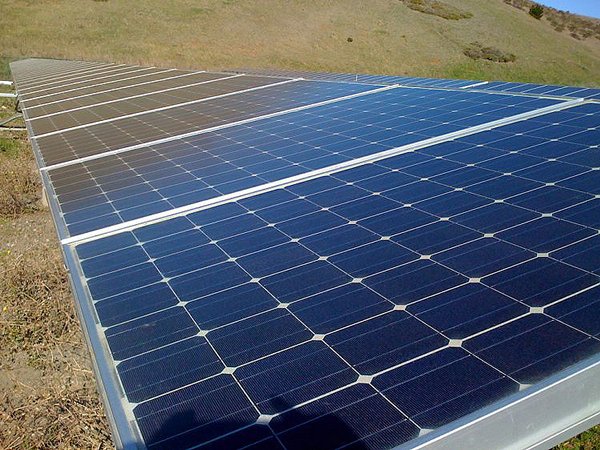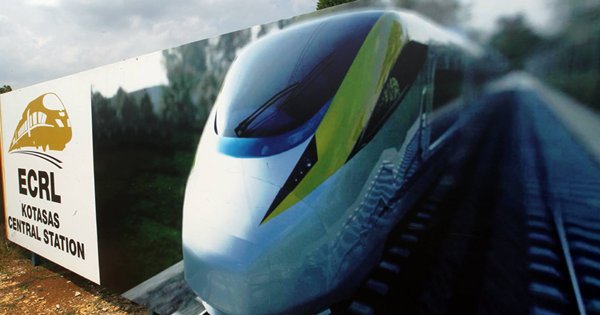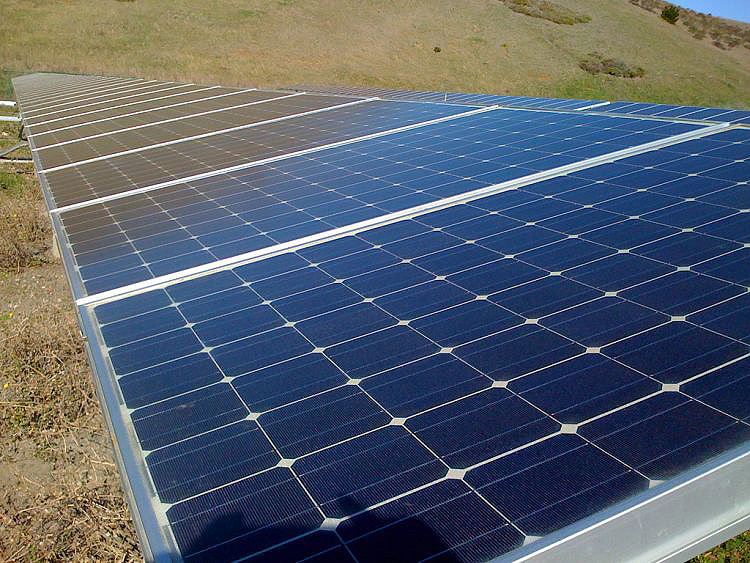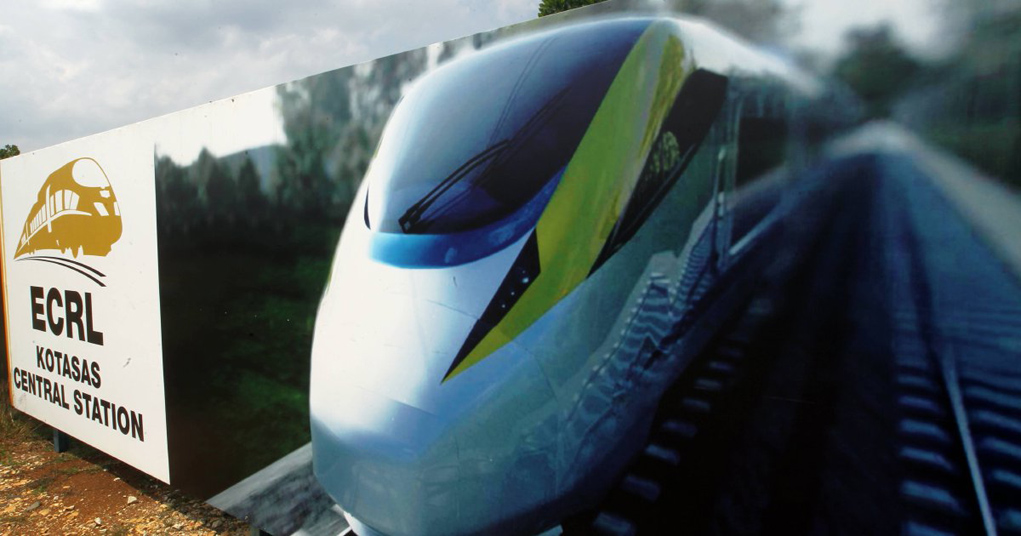Malaysia
Joint venture solar facilities earmarked for powering East Coast Rail Link and Southeast Asia port expansions.

China has announced it is to back moves to build Malaysia's biggest solar-power plant. The project will see a 61MW solar facility established at a 110-hectare site in Kuantan, the capital of Pahang, Malaysia's third-largest province. From Malaysia's point of view, the installation marks one more step on its road to establishing a clean-energy network, while China sees the facility as vital for powering the further Southeast Asian expansion of the Belt and Road Initiative (BRI), the country's ambitious infrastructure development and trade facilitation programme.
Under the terms of an agreement reached at the end of last year, the Nanjing-based ET Solar and Northwest Electric Power Design Institute (NWEPDI), a division of the China Power Engineering Consulting Group, will work with UiTM Solar Power, a Selangor-headquartered solar photovoltaic developer, to build and operate the new facility. When completed, it will be the largest of the 42 new solar installations scheduled to be built at sites across Peninsular Malaysia, Sabah and Labuan in the run-up to 2020. Malaysia's Energy Commission hopes to bring 360MW of new solar power capacity on-stream over the next three years.
The Kuantan facility is expected to generate enough clean energy to power 80,000 households when connected to the national grid in November this year. ET Solar's second major Malaysian project, it comes in the wake of the company's work on a number of large-scale installations across the world, including sites in the UK, the US, Germany, Japan, South Africa, Chile and Turkey.
Its first project in the country was commissioned in April last year and saw the company establish a 12MW solar-power plant in the northern Kedah state. The facility came online at the end of last year and currently generates enough energy to power more than 5,000 households.
Apart from Chinese companies, South Korean businesses have also lent their expertise to help meet Malaysia's clean-energy aspirations. In December last year, the Seoul-headquartered Hanwha Energy Group announced it had been appointed to install and manage a 48MW solar-power facility in the northwestern Perlis state. With construction work scheduled to begin next year, it is expected to power 15,000 households when it comes online in October 2020.
Taken together, the Kuantan, Kedah and Perlis solar plants form part of an evolving clean-energy network designed to generate electricity for commercial and household use. A proportion of their output has also been earmarked for powering a number of BRI-related infrastructure projects, most notably the East Coast Rail Link, the expansion of Kuantan Port and the completion of work on the Pan-Borneo Highway.
The facilities are also key elements in the Malaysian Solar PV Roadmap 2030, which is likely to be unveiled later this year. The work of the Malaysian Investment Development Authority, the Roadmap is expected to act as the blueprint for delivering the country's integrated solar-energy ambitions.
Prior to the official unveiling of the Roadmap, a number of the expected proposals have already been enacted. In October last year, for instance, work began on stepping up the manufacture of solar photovoltaic cells, with the country aiming to be the world's second-largest manufacturer, after China, of such units – vital links in the solar-power generation chain.
Over the medium-term, more opportunities are expected to emerge for BRI investors as Malaysia continues to prioritise the expansion of its sustainable-energy sector in a bid to cut greenhouse emissions, reduce the nation's reliance on its oil and gas reserves and improve energy efficiency, while also bringing down the overall cost of power generation. The country is aiming to produce 2,080MW of energy from renewable sources by 2020, with solar power accounting for more than half of that total.
Geoff de Freitas, Special Correspondent, Kuala Lumpur
Editor's picks
Trending articles
Transformative East Coast Rail Link secures mainland investment, enhancing connections to China-funded port.

Work is set to begin on two of Malaysia's most ambitious infrastructure development projects – the construction of the East Coast Rail Link (ECRL) and a major upgrade to the Kuantan Deepwater Port. Both projects are being bankrolled by Chinese investment, with their development managed by two mainland-led consortiums, a sure sign that Beijing sees the programmes as an integral part of the Belt and Road Initiative (BRI), China's ambitious infrastructure and trade facilitation programme.
The ERCL is one of the key planks in Malaysia's bid to economically rejuvenate its eastern region. With a proposed budget of some RM55 billion (US$13 billion), the 700km rail line is being constructed by the China Communications Construction Company (CCCC), the state-owned infrastructure development giant, and is expected to be operational by July 2024.
Fully-electrified, the oxbow-shaped line will be built in two phases, ultimately connecting Port Klang on the west coast, the country's largest container port, with Kuala Lumpur, the Malaysian capital, while also servicing several urban centres and ports along the eastern seaboard. Its northernmost terminal will be Pengkalan Kubor, a strategically significant town on the Thai-Malaysia border. The line will carry both a 160 kph passenger service and a more sedate 80kph freight service.
With 15 viaducts and 10 tunnels – the longest being 5.6km in length – 70% of the ECRL's capacity will be given over to freight services, with a throughput of more than 54 million tonnes of cargo anticipated by 2030. The remaining 30% will be allocated to the 5.4 million passengers expected to travel the route every year, making it the country's primary inter-regional transport system.
The initial 600.3km phase of the project will run from the Gombak Integrated Transport Terminal in the state of Selangor to Kota Bharu, the capital of the north-eastern state of Kelantan. With 21 stops along the way, it will connect Kota Sas, Kuantan Port, Cherating, Kertih Port, Kertih Airport and Kuala Terengganu, the largest city on the east coast. The second phase will deliver two extension lines – a 24.5km northern link running from Kota Bharu to Pengkalan Kubor and a 78.6km southern spur connecting Gombak and Port Klang.
In total, 85% of the funding for the project has been provided by the Export-Import Bank of China (EximBank) with the loan repayable at a rate of 3.25%. The remaining 15% has been sourced via Malaysia's sukuk Islamic bond scheme, an initiative managed by three of the country's domestic banks.
Overall, developing the country's rail infrastructure has been designated as a priority by the Malaysian government and forms a key component of its economic transformation plan. This focuses on providing enhanced links between the country's eastern and western seaboard ports, while reducing the development gap between the west coast and the country's less-industrialised eastern states.
It also seeks to remedy one of the country's most pressing infrastructure shortcomings. With the majority of Malaysia's inter-city rail lines running on a north-south axis, many of the towns, cities, ports and industrial zones in the country's eastern region have long been left solely reliant on road links. It is now hoped that the huge investment planned for the rail sector will bring it up to the standard of the country's existing port, air and road networks.
Once completed, the ECRL is expected to jumpstart economic activity in the East Coast Economic Region, which extends across 51% of Peninsular Malaysia and is home to some five million people. It is hoped the new line will boost the region's per annum GDP by 1.5% annually for the next 50 years.
Aside the from the economy of eastern Malaysia, the other key beneficiary of the ECRL is expected to be Kuantan, the state capital of Pahang and the site of the country's most significant east coast port. The port, which offers strategic access to the South China Sea, is currently undergoing a major upgrade. This will double its capacity to 52 million freight weight tonnes (FWT) and allow the largest container ships to berth.
The first phase of the work on the port's new deep-water terminal is expected to be completed by the summer of this year, with phase two scheduled to go online in 2019. Already one of the country's prime conduits for imported goods and raw materials for industrial production and manufacturing, the expanded facility is also expected to handle a greater throughput of imported oil and gas.
The redevelopment work on the port is being headed by the Kuantan Port Consortium, a joint venture between IJM Corporation Berhad, one of Malaysia's leading construction groups, and Beibu Gulf Holding (Hong Kong), a subsidiary of the Guangxi Beibu Gulf International Port Group, one of China's largest port development and management specialists. At present, ownership of the consortium is split on a 60:40 basis in favour of IJM, with the Malaysian government also having a special rights share.
One of the key beneficiaries of the port's redevelopment will be the nearby China-Kuantan Industrial Park, the first Special Economic Zone to be jointly developed by Malaysia and China. At present, the park primarily focuses on power generation, energy-saving initiatives, environmentally-friendly technology, high-end equipment and the manufacturing of advanced materials.
Geoff de Freitas, Special Correspondent, Kuala Lumpur
Editor's picks
Trending articles
The Netflix epic Marco Polo about the Silk Routes reflected Malaysia’s 500 years of history related to the Belt and Road Initiative, said Rezal Rahman of Pinewood Iskandar Malaysia Studios at FILMART 2017. Iranian producer and actor Alireza Shaja-Nuri and Singapore producer Lim Teck spoke of developing collaborations tapping Hong Kong talent while Norman Abdul Halim of Malaysia’s KRU Studios said Hong Kong’s “connector role” would help access larger movie markets.
Speakers:
Rezal Rahman, CEO, Pinewood Iskandar Malaysia Studios
Alireza Shaja-Nuri, Producer and Actor, Iran
Lim Teck, MD, Clover Films
Norman Abdul Halim, Executive Producer, KRU Studios
Related Links:
Hong Kong Trade Development Council
http://www.hktdc.com
HKTDC Belt and Road Portal
http://beltandroad.hktdc.com/en/





 503 Views
503 Views